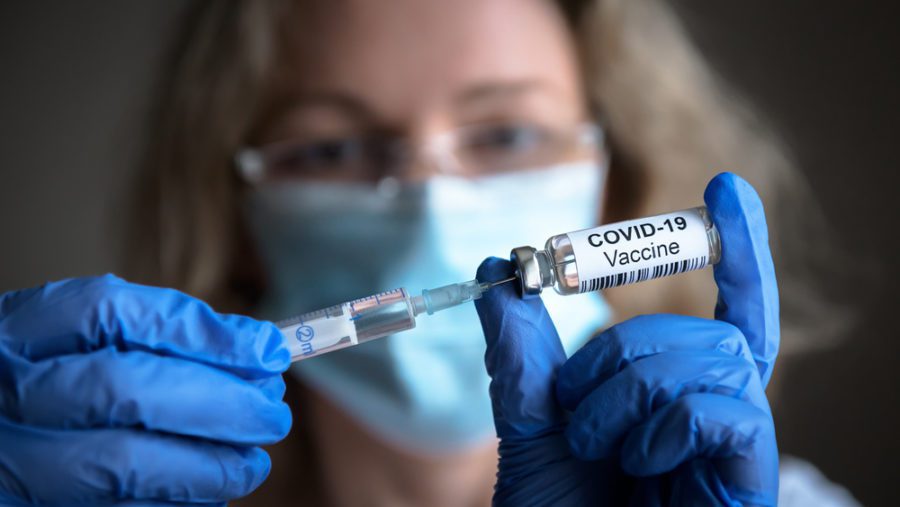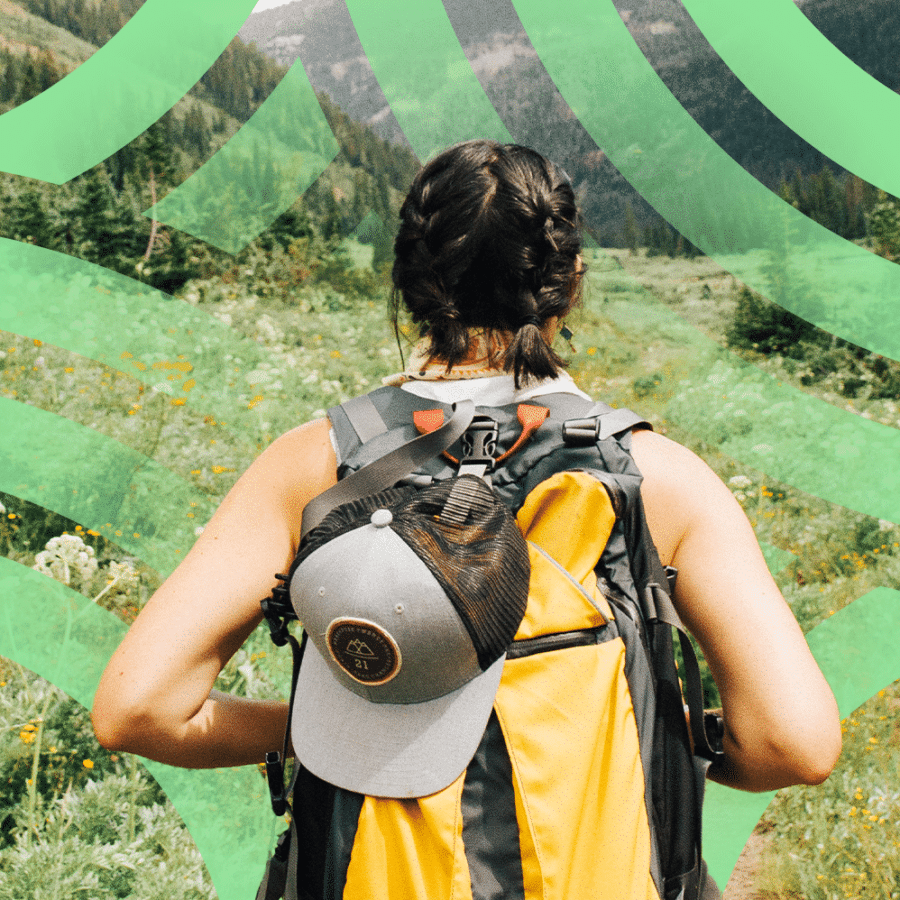For healthcare workers who have been hardest hit by the effects of the COVID-19 pandemic, the recent vaccine approvals are likely a very welcome development. While this is a step in the right direction, there are still many phases and hurdles between now and widespread immunization.
Many state representatives and doctors have promised the first doses to healthcare workers,1 but what will the COVID vaccine timeline look like?
The COVID Vaccine Developments So Far
On December 11th, 2020, the FDA took a groundbreaking step forward in the COVID vaccine process by granting emergency authorization to the Pfizer-BioNTech COVID-19 vaccine,2 then another on December 18th by doing the same with the Moderna vaccine.3
By the end of the month, the U.S. had already administered over 2.1 million doses, which is almost half of the total COVID vaccinations conducted worldwide.4 Another 7.9 million doses have been shipped across all 50 states since its initial release.5
As per the CDC’s recommendation, many of the first-round vaccine doses have gone to healthcare personnel and residents of long-term care facilities as part of phase 1a.6 However, there are an estimated 21 million healthcare workers and 3 million staff and residents in care facilities included in this top-tier of priority.7
How will the COVID 19 vaccination timeline proceed from here
In the Coming Weeks: Completing Phase 1a
Each individual state maintains jurisdiction over its vaccine distribution and administration of the COVID vaccine. However, most states appear to be following the CDC’s recommendations and announcing similar timelines.
Healthcare workers around the country will continue to receive their COVID shots, but the process differs for each state. In most counties, there are two ongoing systems:
- The Pharmacy Partnership for Long-term Care Program8 – Retail pharmacies like CVS and Walgreens have partnered with the CDC to vaccinate residents and staff of skilled nursing facilities, assisted living, and other long-term care homes.
- By appointment – Eligible healthcare personnel will be able to book appointments at one of their state’s vaccination administration sites.
But when there are so many eligible workers and not enough first-batch vaccines, how does each state determine who is most eligible?
- In Washington state, the Department of Health considers asking hospital employers to identify the highest-risk healthcare workers and provide them with a voucher or letter,9 essentially bumping them to the top of the list.
- In Maricopa County, Arizona, the Department of Public Health has asked workers with phase 1a eligibility to complete a pre-screening online questionnaire. This will help assess the overall vaccine demand among eligible workers to allow the department to better prioritize their distribution and administration.10
- Colorado, on the other hand, has strayed slightly from the CDC’s recommendation in creating their phased roll-out plan. They’ve further narrowed phase 1a to include only “highest-risk healthcare workers and individuals.” For them, that includes only healthcare personnel in direct contact with confirmed COVID cases for more than 15 minutes over 24 hours.11
Other states follow similar plans with their own variations. For example, Massachusetts has decided to include those in prisons and homeless shelters among their top priority, while three states have added law enforcement to their first-round distribution.
Regardless of the specific circumstances, the COVID vaccine for healthcare workers will be widely distributed and administered in the coming weeks—nearly 25 million people in all.
Over the Next Month: Expanding Distribution to Phase 1b
After receiving the vaccination themselves, healthcare providers will continue to be intimately involved with the vaccine’s roll-out—many of them as distributors rather than receivers.
If states continue to follow the CDC’s guidance, the following priority groups will be included in phase 1b:
- Frontline essential workers – This includes emergency responders such as firefighters and law enforcement, public employees such as correctional officers, postal workers, education staff, and public transit workers, and agricultural workers, farmers, and grocery store personnel.
- Elderly, 75 and older – This age group has been deemed one of the most at-risk populations because of the increased hospitalization rates and serious cases.
Within these broad categories, states will have to determine a more nuanced timeline based on their own discretion—which frontline workers are most at risk, whether they take pre-existing conditions into account, and whether workers take priority over the elderly or vice versa.
However, these vaccinations are said to take place over the next month or so, covering about 50 million people by the end of January 2021.12
The Following Several Months: Widening the Net to Finish Phase 1c
The third priority category already announced by the CDC is phase 1c. This round includes the following vulnerable populations:
- Elderly, 65 to 74 – This age group is also a high-risk category, though not quite as much as folks over the age of 75.
- Underlying medical conditions – Those aged 16 to 64 with serious health issues, especially cancer, diabetes, previous strokes, and chronic heart, kidney, and pulmonary conditions,13 are at an increased risk of experiencing severe symptoms of COVID-19.
- Other essential workers – This secondary category casts a wider net of occupations and sectors deemed essential, including food service, construction, IT, transportation, and more.
The entirety of phase 1 includes people across all different fields, ages, and locations, making widespread distribution a logistical challenge. However, an additional 50 million people in these three priority sectors are said to be vaccinated during February 2021, with increased distribution to priority individuals over the following two months.14
During Spring 2021: More Widespread Public Availability
After attending to the nation’s most vulnerable and at-risk populations, each state will begin to include the general public in their vaccination efforts.
The timeline of this roll-out depends largely on the success and efficiency of the initial phases, but many experts and leaders are hopeful that the average American will have access to the vaccine anywhere from late March or early April to the beginning of fall.15
Can I Get the COVID-19 Vaccine If I Had COVID-19?
If you’ve previously been diagnosed with COVID and have since recovered, there’s no reason you can’t now get the vaccine once it becomes available to you.
In fact, health experts across the country are stressing the importance of getting vaccinated even if you’ve been sick with COVID already. This is because of the uncertainty surrounding long-lasting natural immunity—or potential lack thereof.
If you’ve been infected, there’s a chance you’ll develop a strong immune system defense against COVID, but it’s not a guarantee. With evidence of COVID re-infections, many people believe natural immunity doesn’t last forever.16 The vaccine will boost and likely extend an individual’s immunity—or introduce it for the first time.
If you’re currently sick with or recovering from COVID-19, however, you should wait until any symptoms have passed and you can safely end your self-isolation period.17
How Long Will It Take to Build Immunity After Getting the COVID-19 Vaccine?
The body can take several weeks after receiving the COVID vaccine to build up substantial immunity.
There’s a slow process involved with vaccination immunity:
- The mRNA vaccine introduces genetic instructions on how to make the viral antigen—the “spike protein”—a signature feature of the COVID-19 virus.
- The body produces copies of this protein—not the virus itself, just an antigenic protein, which can provoke an immune response.
- After fulfilling their vital role, the mRNA instructions are then broken down and disposed of. They can’t alter your genetic material in any way.
- The immune system instinctively starts producing antibodies, thinking this spike protein is the COVID-19 virus; in reality, it’s more like an impostor dressed up as COVID, but your immune system can’t tell the difference.
- Now that your body has created all these antibodies, it will be well-equipped to fight off the real coronavirus if you were to get infected with it.
That’s the basic gist of mRNA vaccine immunity, but it doesn’t happen instantaneously. Anyone who’s been vaccinated could still contract the disease if their body hasn’t had the time to mount a substantial antibody defense. That’s why you should continue to follow health guidelines and safety protocols even after receiving your two doses.
How Was the COVID Vaccine Developed So Quickly?
When people ask about the COVID vaccine process and timeline, they’re wondering about more than just when they can be vaccinated themselves. There’s a lot of mistrust and uncertainty around the vaccine development phase itself.
While the entire process, start to finish, took much less time than many previous vaccines, this is because of key differences in the circumstances surrounding COVID-19, rather than neglect of guidelines or disregard for safety:
- Available funding – Oftentimes, vaccine trials stall because they lack substantial funding. But the COVID-19 vaccine candidates had plenty of money, including more than $12 billion total through Operation Warp Speed, and, in the case of Pfizer-BioNTech, $445 million from the German government, plus the sales from pre-purchased doses.18
- Widespread prioritization – In the face of a global pandemic, top scientists and pharmaceutical companies from around the world put all of their time and energy into this project.
- Shortened test period because of ample exposure – After injecting 30 thousand volunteers with the Moderna vaccine in the phase III clinical trial, participants and scientists had to wait for a certain threshold of positive, symptomatic COVID 19 cases to emerge before reviewing the results, according to standard procedure.
Because of COVID’s rapid spread, that took a fraction of the time as it would with other less common diseases. This meant they could see the results of the vaccine’s efficacy more quickly—and, therefore, receive approval to begin vaccine distribution. - Existing research into mRNA vaccines and novel coronaviruses – The COVID vaccine may be a novel creation, but companies have been studying the existing mRNA platform technology for ten to 15 years, with recent breakthroughs that made today’s vaccine possible.19
The timeline may appear rushed, but the same trials and studies still took place; instead of conducting them sequentially, with months or even years between phase I, II, and III, pharmaceutical companies have had the funding, experts, test subjects, and knowledge base to complete these trials simultaneously.
Getting the Fresh Start You Deserve After the COVID Vaccine
The entire healthcare industry has been turned on its head these past several months. Finally, we’re starting to see some light at the end of a tunnel. Now’s the perfect time to try something new—experience new things, travel, live your life to the fullest again.
With Host Healthcare, you can do that while remaining gainfully employed as a traveling nurse.
All you have to do is fill out an application, create a personal profile, and connect with a recruiter who will help you land the perfect placement. After the year you’ve had, that must sound pretty easy—so why not get started with one of the most reputable travel healthcare companies in the world?
Sources:
- Huang, Pien. “First COVID-19 Vaccine Doses To Go To Health Workers, Say CDC Advisers.” NPR, NPR, 5 Nov. 2020, www.npr.org/sections/health-shots/2020/11/05/931844298/first-covid-19-vaccine-doses-to-go-to-health-workers-say-cdc-advisers
- “FDA Takes Key Action in Fight Against COVID-19 By Issuing Emergency Use Authorization for First COVID-19 Vaccine.” U.S. Food and Drug Administration, FDA, 11 Dec. 2020, www.fda.gov/news-events/press-announcements/fda-takes-key-action-fight-against-covid-19-issuing-emergency-use-authorization-first-covid-19
- “FDA Takes Additional Action in Fight Against COVID-19 By Issuing Emergency Use Authorization for Second COVID-19 Vaccine.” U.S. Food and Drug Administration, FDA, 18 Dec. 2020, www.fda.gov/news-events/press-announcements/fda-takes-additional-action-fight-against-covid-19-issuing-emergency-use-authorization-second-covid
- Ritchie, Hannah, et al. “Coronavirus (COVID-19) Vaccinations – Statistics and Research.” Our World in Data, Global Change Data Lab, www.ourworldindata.org/covid-vaccinations
- Brueck, Hilary, and Aria Bendix. “When Can I Get a Coronavirus Vaccine?” Business Insider, Business Insider, 21 Dec. 2020, www.businessinsider.com/when-can-i-get-a-coronavirus-vaccine-timeline-2020-11
- “When Vaccine Is Limited, Who Gets Vaccinated First?” Centers for Disease Control and Prevention, Centers for Disease Control and Prevention, www.cdc.gov/coronavirus/2019-ncov/vaccines/recommendations.html
- Stanley-Becker, Isaac, and Lena H. Sun. “Health-Care Workers and Nursing Home Residents Should Be the First to Get Coronavirus Vaccines, CDC Advisory Group Says.” The Washington Post, WP Company, 2 Dec. 2020, 8:03 p.m. PST, www.washingtonpost.com/health/2020/12/01/vaccine-priority-groups-covid/
- “Pharmacy Partnership for Long-Term Care Program.” Centers for Disease Control and Prevention, Centers for Disease Control and Prevention, 9 Dec. 2020, www.cdc.gov/vaccines/covid-19/long-term-care/pharmacy-partnerships.html
- Carroll, Megan. “Who Is Getting the COVID-19 Vaccine First in Washington?” King5, 14 Dec. 2020, 12:52 p.m. PST, www.king5.com/article/news/health/coronavirus/vaccine/who-is-getting-the-covid-19-vaccine-first-in-washington/281-3ff7df1c-aa12-425e-b1d5-13b1553a9c14
- “COVID-19 Vaccine – Phase 1A.” Maricopa County, www.maricopa.gov/5647/Phase-1A
- Ingold, John, and Jesse Paul. “Colorado Now Has Enough Coronavirus Vaccine for All Frontline Health Care Workers — and Is Poised to Move into Phase 1b.” The Colorado Sun, 30 Dec. 2020, 3:01 a.m. MST, www.coloradosun.com/2020/12/30/colorado-coronavirus-vaccine-phase-1b/
- Brueck, Hilary, and Aria Bendix. “When Can I Get a Coronavirus Vaccine?” Business Insider, Business Insider, 21 Dec. 2020, www.businessinsider.com/when-can-i-get-a-coronavirus-vaccine-timeline-2020-11
- “People with Certain Medical Conditions.” Centers for Disease Control and Prevention, Centers for Disease Control and Prevention, www.cdc.gov/coronavirus/2019-ncov/need-extra-precautions/people-with-medical-conditions.html
- Brueck, Hilary, and Aria Bendix. “When Can I Get a Coronavirus Vaccine?” Business Insider, Business Insider, 21 Dec. 2020, www.businessinsider.com/when-can-i-get-a-coronavirus-vaccine-timeline-2020-11
- Porterfield, Carlie. “Here’s When Coronavirus Vaccines May Be Available To The General Public.” Forbes, Forbes Magazine, 22 Dec. 2020, 1:39 p.m. EST, www.forbes.com/sites/carlieporterfield/2020/12/22/heres-when-coronavirus-vaccines-may-be-available-to-the-general-public/?sh=314907d52515
- “Facts about COVID-19 Vaccines.” Centers for Disease Control and Prevention, Centers for Disease Control and Prevention, www.cdc.gov/coronavirus/2019-ncov/vaccines/facts.html
- Christensen, Jen. “Who Should, and Should Not, Get the Covid-19 Vaccine.” CNN, Cable News Network, www.cnn.com/2020/12/16/health/who-should-and-shouldnt-get-covid-19-vaccine/index.html
- Kormann, Carolyn. “Countdown to Immunity.” The New Yorker, 14 Dec. 2020, pp. 20–28.
- Ball, Philip. “The Lightning-Fast Quest for COVID Vaccines – and What It Means for Other Diseases.” Nature News, Nature Publishing Group, 18 Dec. 2020, www.nature.com/articles/d41586-020-03626-1











